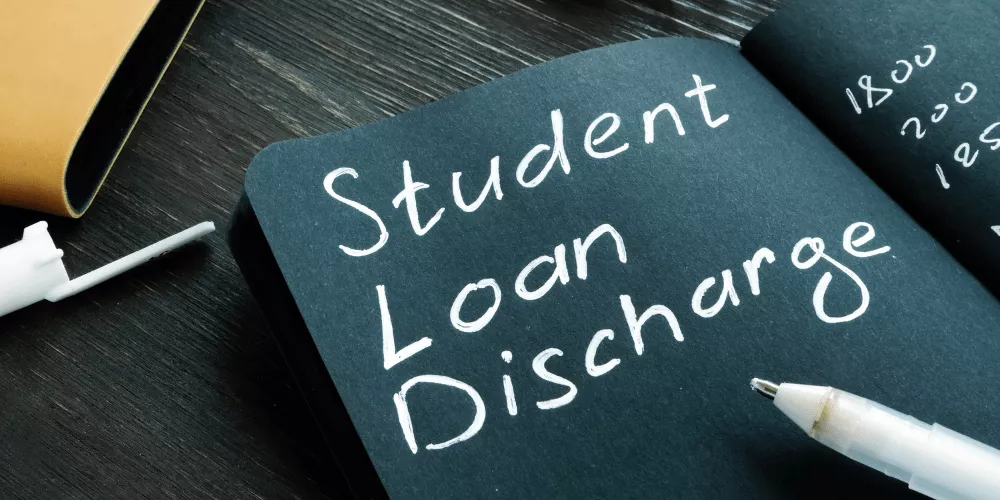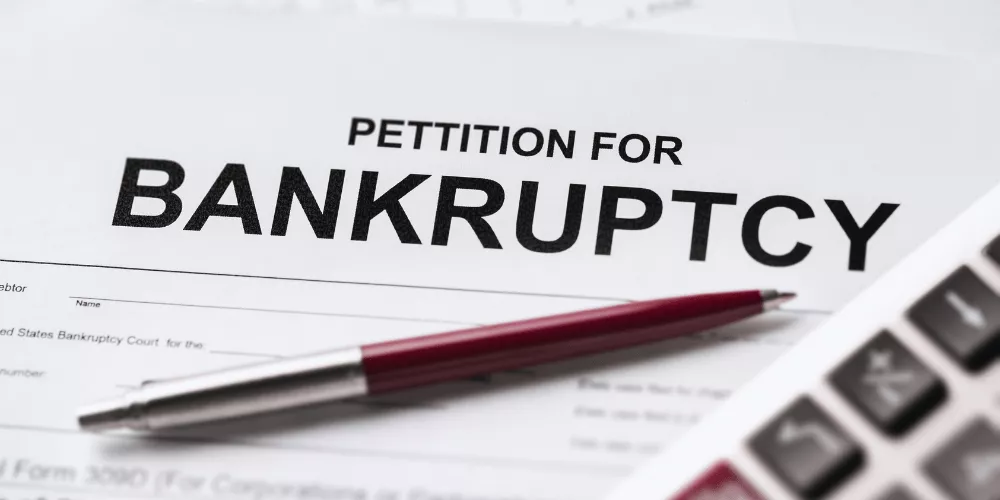
Student loan bankruptcy is one of the most misunderstood topics in personal finance. Many people assume that student loan debt can never be discharged in bankruptcy, but recent changes are starting to shift that belief. In 2025, both federal and private student loan borrowers have new options to consider, especially if they are facing long-term financial hardship.
Bankruptcy isn't easy, and the process of discharging student debt has unique requirements. Still, if your student loan payments are causing unbearable strain and you've exhausted other repayment options, it's worth exploring.
Federal student loan borrowers often face the biggest hurdles when seeking bankruptcy relief. While credit card debt and medical bills are commonly discharged in bankruptcy, federal student loan debt has long been treated differently.
The Department of Education has updated its policies to make relief more accessible. Borrowers must still prove undue hardship, but the process is now more streamlined and transparent.
No. Student loans are not automatically discharged in bankruptcy. Instead, the borrower must file an additional legal action called an adversary proceeding. In this case, the bankruptcy court determines whether your loans meet the threshold for discharge.
Federal student loans and private loans are both eligible for review, but each is assessed on different criteria. You must show that repaying your loans would cause undue hardship and that you've made a good faith effort to repay them.
There are two main types of student loans: federal and private. Federal loans include Direct Loans, Perkins Loans, and other forms of federal student aid. Private student loans are issued by banks or non-government lenders.
Private student loan borrowers may have an easier time proving undue hardship since these loans often lack income-based repayment options. However, recent court rulings have clarified that not all private loans are considered educational debt under the bankruptcy code. This distinction is important because certain types of private loans may be treated more like unsecured consumer debt.
Filing bankruptcy involves more than just submitting paperwork. When you include student loans in your bankruptcy case, you must request a separate review by the bankruptcy court. This begins the adversary proceeding where the court determines whether your loans can be discharged.
A bankruptcy judge will examine your income, expenses, loan type, and repayment history to determine whether your case qualifies. The court will also consider whether you've made a good faith effort to repay your loans before turning to bankruptcy.
An adversary proceeding is a lawsuit within your bankruptcy case that specifically addresses whether your student loans should be discharged. This process can be time-consuming and requires you to present detailed financial documentation.
If you are pursuing student loan bankruptcy, be prepared to show your present ability (or inability) to make payments, your income history, and your long-term financial outlook. A strong case will clearly demonstrate that continuing payments would pose an undue hardship.
The Brunner Test remains the primary legal standard courts use to determine undue hardship. To pass the test, you must show:
While critics argue the Brunner Test is outdated, it is still the law in most jurisdictions. The court's interpretation can vary, so having a qualified attorney or student loan counselor can help you prepare your case.

In 2023, the Department of Justice and Department of Education introduced new guidance aimed at simplifying the process of discharging student loans in bankruptcy. This guidance encourages consistent application of the law across different bankruptcy courts.
Borrowers are now asked to complete an attestation form that provides information on their income, expenses, and efforts to repay. The Department then issues a recommendation to the court, which the bankruptcy judge considers when making a final decision.
For full details, visit the Department of Justice's guidance on student loan bankruptcy.
The attestation form is a critical part of the new bankruptcy review process. It requires borrowers to disclose:
This form must be submitted to the Department of Education, who then works with the Department of Justice to evaluate your claim. While completing the form doesn’t guarantee your loans will be discharged, it increases transparency and helps the judge make an informed decision.
Learn more at StudentAid.gov.
Even with new guidance, the bankruptcy judge has the final say. After reviewing your attestation form and the Departments’ recommendation, the judge issues a ruling. This could result in a full discharge, a partial discharge, or continued repayment under modified terms.
This judge's decision is based on your financial documentation, legal standards, and the credibility of your claims. It’s important to work with professionals who understand student loan law to help present your case effectively.
One of the most important factors in student loan bankruptcy cases is your present ability to repay. The court will evaluate your current income, necessary expenses, and whether you can afford monthly payments on your loans.
Factors like chronic injury, disability, or long-term unemployment can support your claim that repayment is not possible now or in the foreseeable future. You'll need to provide documentation to prove your claim.
While many borrowers hope to have all of their student loans discharged, some may only qualify for a partial discharge. The court could determine that a portion of the loan must still be repaid, depending on your income and the amount of debt remaining.
The concept of a partial discharge is especially relevant for federal student loan borrowers with high balances. It allows the judge to grant bankruptcy relief without requiring full discharge.
Demonstrating a good faith effort to repay your loans is essential. This might include:
If you can show that you made every reasonable effort to repay before filing bankruptcy, the court may be more likely to rule in your favor.
If your student loans are discharged in bankruptcy, the relief can be life-changing. You will no longer owe the discharged amount and your loan servicer will be instructed to stop collections.
This fresh start can allow you to focus on rebuilding your credit, saving for the future, and paying other debts. However, not all borrowers qualify, and even successful cases may result in only partial discharge.
Even if you don’t receive a full discharge, the court may reduce your loan balance or offer better repayment terms. This might include:
You can continue working with your loan servicer to manage the remaining balance. Programs like income-driven repayment or public service loan forgiveness may still be available.
For help, see our guide to student loan forgiveness.
To discharge your student loans, you’ll need to prove that repaying them would cause an undue hardship. This legal standard isn’t clearly defined in the bankruptcy code, so it’s up to the bankruptcy judge to decide based on your situation. Historically, courts have used a test called the Brunner Test, which asks three things:
Some courts also consider the “totality of the circumstances,” which gives the judge more flexibility. Either way, these cases are handled through an adversary proceeding in bankruptcy court, which is a separate legal process from your main bankruptcy case.
Recent changes from the U.S. Department of Justice and Department of Education have made the undue hardship requirement easier to prove for federal student loan borrowers. Under the new guidance issued in late 2022 and updated for 2025, the government has created a standardized attestation form to help borrowers clearly present their financial picture. This form allows you to demonstrate your present ability to repay and whether you’ve made consistent monthly payments or attempted other options like income-driven repayment.
As explained in the official guidance from the DOJ, the government may now agree that a borrower qualifies for a bankruptcy discharge, making it more likely the judge’s decision will be in the borrower’s favor.
Once you file for bankruptcy, your student loan debt isn’t automatically included in your discharge like unsecured consumer debt such as credit cards or medical bills. Instead, you must request a special review called an adversary proceeding. This is where you’ll provide detailed information about your income, expenses, repayment history, and other factors that affect your ability to pay.
This process may involve answering questions from the court, your loan servicer, and the attorneys representing the Department of Education. If the court finds that you meet the criteria for undue hardship, your student loans could be discharged in bankruptcy, either partially or fully. In some cases, only a partial discharge is granted, which still provides bankruptcy relief by reducing your remaining balance.
As part of the new guidance, borrowers now submit an attestation form during their bankruptcy case. This document helps the court determine if you qualify under the undue hardship standard. It asks about:
The form also requires you to authorize the Department of Education and Justice Department to review your federal tax information, including adjusted gross income, debt obligations, and other financial details.
This process is intended to make it easier for bankruptcy court officials to evaluate your claim fairly and consistently, instead of relying on unpredictable legal arguments. If your situation meets the guidelines, the government may support your request for a discharge.
Most of the current policy changes apply only to federal student loans. That means federal student loan borrowers are more likely to benefit from these updates. The attestation form, for example, is only used for loans issued or backed by the federal government, such as Direct Loans and Federal Family Education Loans (FFEL) still owned by the Department of Education.
For private student loans, the situation is more complicated. Private student loan borrowers must still prove undue hardship under the bankruptcy code, but without the support of standardized federal forms. That said, some courts have recently begun ruling that certain private loans—especially those not used directly for tuition—may qualify for discharge more easily.
Even with the new rules, discharging student loans is still harder than wiping out other debts. Many student loan borrowers assume that filing for bankruptcy means automatic forgiveness, but that’s not the case. Courts require clear evidence of financial distress, especially for people with federal student loan debt.
Some key barriers include:
If you’re unsure where to start, we recommend reading the Student Loan Borrower Assistance Center’s bankruptcy guidance from the National Consumer Law Center.
As of 2025, Congress continues to explore ways to make student loan bankruptcy more accessible. Several bills have been introduced, including:
If passed, these laws would simplify the process for student borrowers to get bankruptcy relief, especially those facing disability, chronic injury, or other long-term challenges. They would also clarify how the bankruptcy court determines eligibility for discharge and potentially allow for more debts to be wiped out.
Until such laws are passed, borrowers must rely on the Brunner test, attestation form, and court judgment.
Filing bankruptcy is not the only option for struggling borrowers. Depending on your situation, you may be eligible for:
Sometimes, debt relief is possible without involving a bankruptcy judge or attending court at all. Learn more in our student loan debt crisis guide, which outlines strategies for managing student loan debt without drastic measures.
Before you decide to file a bankruptcy case, it’s wise to speak with a certified counselor who understands federal student loan relief options and private student loans. A good counselor can:
At Credit.org, our nonprofit team works with student loan borrowers, helping them avoid undue hardship and understand every option available. Learn more in our warning on the dangers of using student loans to buy assets, or explore common student loan mistakes to avoid.
If you’re considering bankruptcy as a last resort, it’s important to get guidance from a certified non profit counselor. Learn more about Credit.org’s Bankruptcy Counseling Services and how we can help you understand the process and your rights as a borrower.
If you’re facing the possibility of bankruptcy, you don’t have to go it alone. Our team offers free student loan counseling to help you evaluate all of your options, including bankruptcy relief and other repayment solutions.
Sign up now to get support from a trusted nonprofit financial counselor.